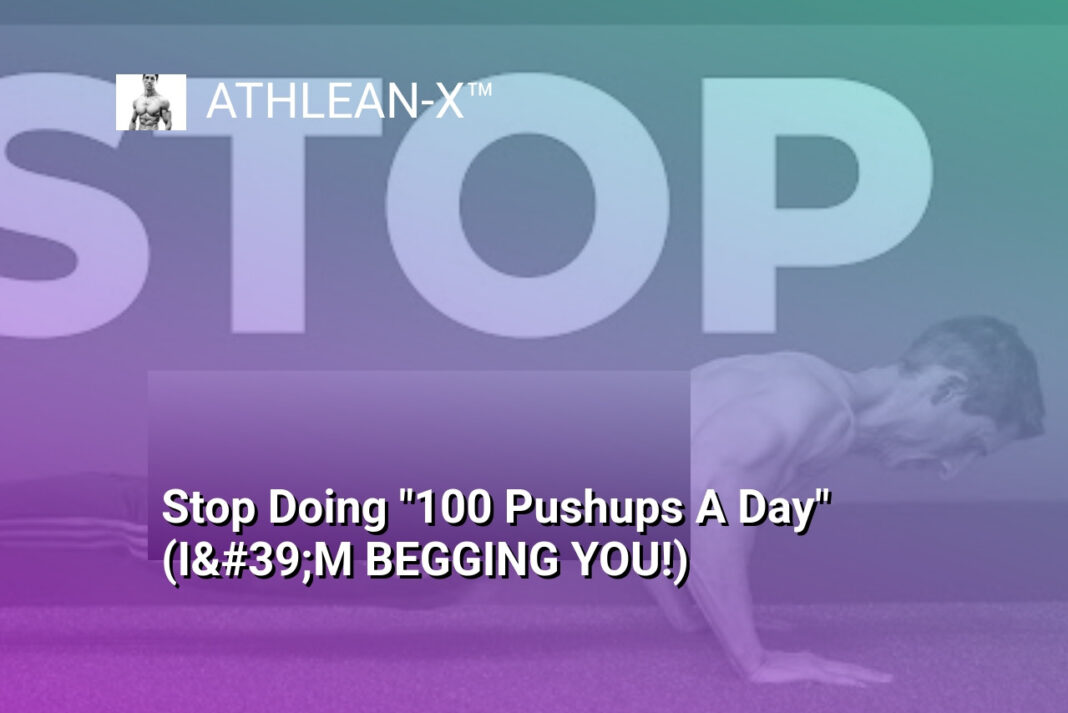The Bottom Line:
- I discovered that daily push-ups primarily enhance muscular endurance rather than delivering substantial strength development, requiring strategic modifications to achieve meaningful fitness progression.
- Body weight mechanics reveal that during standard push-ups, individuals effectively lift approximately 65-75% of their total body mass, which represents a relatively modest resistance for comprehensive strength training.
- Repetitive high-volume training without progressive overload inevitably leads to performance plateaus, shifting muscular adaptations towards endurance instead of meaningful hypertrophy.
- Continuous daily training to muscular failure compromises recovery processes and impedes optimal muscle growth, necessitating a balanced approach to exercise intensity and recuperation.
- To maximize push-up effectiveness, I recommend incorporating advanced variations like elevated, weighted, or technique-focused repetitions while integrating complementary resistance training methods to stimulate comprehensive muscular development.
The Limitations of High-Volume Push-Up Training
Muscle Adaptation and Performance Plateau
When performing the same number of push-ups daily, the human body quickly adapts to the repetitive stimulus. This adaptation leads to diminishing returns in muscle strength and growth. The body becomes exceptionally efficient at executing the movement, which means the muscular challenge decreases over time. Without introducing progressive overload through weight, variation, or intensity modifications, muscle development stagnates, rendering the high-volume approach less effective for long-term strength gains.
Biomechanical Limitations of Bodyweight Training
Push-ups primarily engage the chest, triceps, and anterior deltoids, but they inherently restrict the potential for maximal strength development. The fixed bodyweight resistance means muscles are not consistently challenged beyond their current capacity. Unlike weight training, where external loads can be incrementally increased, push-ups provide a relatively static resistance. This limitation means that after initial improvements, muscle growth and strength gains become increasingly difficult to achieve without introducing more complex variations or additional resistance mechanisms.
Recovery and Physiological Stress Management
Performing 100 push-ups daily can create significant physiological stress without adequate recovery periods. Muscles require sufficient rest and protein synthesis time to repair and grow stronger. Continuous high-volume training without strategic rest intervals can lead to overtraining syndrome, potentially causing decreased performance, increased injury risk, and hormonal imbalances. Professional strength training methodologies emphasize the importance of structured rest cycles and varied intensity to optimize muscle development and prevent potential physiological burnout.
Understanding Body Weight and Exercise Load
The Biomechanics of Body Weight Resistance
Push-ups represent a complex bodyweight exercise where individuals leverage their own mass against gravitational resistance. During a standard push-up, an individual typically lifts approximately 65-75% of their total body weight, which translates to a significant yet limited strength training stimulus. For an average 160-pound person, this equates to roughly lifting 120 pounds, which represents a modest resistance compared to traditional weight training protocols.
Load Distribution and Muscular Engagement
The mechanical efficiency of push-ups depends on multiple physiological factors beyond simple repetition count. Muscle recruitment patterns vary based on body positioning, angle of movement, and individual biomechanical differences. While high-volume push-up routines can enhance muscular endurance, they often fail to provide sufficient progressive overload necessary for substantial strength development. The body quickly adapts to consistent stress, creating a plateau effect that diminishes potential muscle growth and strength gains.
Limitations of Repetition-Based Training
Continuously performing identical movement patterns without strategic variation leads to diminishing returns. The human musculoskeletal system requires consistent challenge and varied stimuli to continue developing strength and muscle mass. Simply increasing repetitions without introducing additional resistance or complexity fails to trigger meaningful hypertrophic responses. Advanced strength development necessitates strategic manipulation of variables such as load, tempo, range of motion, and exercise complexity to maintain consistent neuromuscular adaptation and growth potential.
Reps, Overload, and Muscle Development Principles
Understanding Muscle Stimulation and Progressive Overload
Muscle development fundamentally relies on systematic stress and recovery principles. When performing repetitive bodyweight exercises like push-ups, the body adapts quickly to consistent stimulus, which means muscles require increasingly challenging loads to continue growing. Simply executing 100 daily push-ups creates a limited adaptation pathway, primarily enhancing muscular endurance rather than promoting substantial strength or hypertrophy gains.
Load Dynamics and Muscle Recruitment Strategies
Bodyweight exercises inherently restrict maximum load potential. During standard push-ups, individuals typically lift approximately 65-75% of their total body weight, which translates to a modest resistance equivalent to a 120 lb bench press for an average 160 lb person. This load limitation means muscles aren’t consistently challenged beyond their current capacity, ultimately constraining strength development potential. To optimize muscle recruitment, athletes must strategically introduce variation through modified push-up techniques, resistance adjustments, and intentional tempo manipulation.
Strategic Training Principles for Muscle Development
Effective muscle growth demands a nuanced approach beyond repetitive volume. High-repetition protocols predominantly enhance muscular endurance while minimizing hypertrophy potential. Implementing advanced techniques like tempo manipulation, incorporating challenging variations such as archer push-ups or elevated foot positions, and maintaining lower repetition ranges with increased resistance can significantly improve muscle stimulation. Additionally, respecting recovery windows and avoiding daily failure-based training ensures consistent progress and reduces injury risk, allowing muscles adequate time to repair and grow stronger between training sessions.
Recovery and Training to Muscle Failure
Understanding Muscle Fatigue and Performance Limits
Muscle failure represents a critical point in resistance training where muscles can no longer generate sufficient force to complete another repetition with proper form. When performing push-ups daily, repeatedly pushing to complete muscular exhaustion can lead to diminished returns and potential overtraining. The body requires strategic stress and adequate recovery to stimulate meaningful strength adaptations. Continuously training at maximum intensity without proper rest intervals disrupts the muscle’s natural regeneration process and can compromise overall performance potential.
Strategic Recovery Protocols
Effective muscle development demands a nuanced approach to recovery that balances stress and recuperation. Implementing strategic rest periods between intense training sessions allows muscle tissues to repair and rebuild stronger. For push-up training, this means alternating intensity levels, incorporating active recovery days, and monitoring physiological indicators of fatigue such as decreased performance, persistent muscle soreness, and reduced range of motion. Professional athletes and strength coaches recommend tracking heart rate variability and subjective energy levels to optimize recovery windows and prevent potential overuse injuries.
Progressive Overload and Muscle Stimulus
Simply performing high repetitions without systematic progression limits muscle growth and strength development. To maximize muscular adaptations, athletes must introduce incremental challenges that force the body to continually adapt. This can be achieved through variations like changing hand positioning, incorporating weighted resistance, manipulating tempo, or introducing more complex movement patterns. The goal is to create consistent, manageable stress that challenges muscle groups without overwhelming their capacity for recovery and growth. By thoughtfully designing training protocols that respect individual physiological limitations, practitioners can develop more sustainable and effective strength-building strategies beyond monotonous high-repetition approaches.
Advanced Strategies for Effective Strength Training
Progressive Overload: The Key to Continuous Strength Development
Implementing progressive overload is crucial for sustained strength gains. Unlike high-repetition routines, strategic loading techniques ensure continuous muscle adaptation. This involves systematically increasing weight, adjusting repetition ranges, modifying exercise complexity, and manipulating rest intervals. For push-up variations, this might mean transitioning from standard push-ups to more challenging versions like diamond, decline, or weighted push-ups. Athletes should aim to incrementally increase difficulty by adding resistance bands, weighted vests, or performing more technically demanding variations that challenge muscle recruitment patterns.
Periodization and Muscle Stimulus Optimization
Effective strength training requires a structured approach to training cycles. Periodization involves deliberately varying training intensity, volume, and exercise selection to prevent plateaus and optimize muscular development. By strategically alternating between hypertrophy-focused phases with higher repetitions and strength-focused phases with lower repetitions and higher loads, individuals can maintain consistent muscle growth and strength improvements. This method prevents physiological adaptation and ensures continuous neuromuscular challenges that stimulate comprehensive muscle development.
Integrated Movement Patterns and Complementary Training
Comprehensive strength development extends beyond isolated exercises. Incorporating compound movements that engage multiple muscle groups simultaneously creates more functional strength adaptations. While push-ups are valuable, integrating exercises like pull-ups, rows, overhead presses, and squats provides balanced muscular development. Additionally, implementing accessory movements that target stabilizer muscles and address potential imbalances ensures more robust overall strength. Utilizing varied training modalities such as bodyweight exercises, free weights, and resistance training creates a more holistic approach to muscle conditioning and prevents potential overuse injuries.





